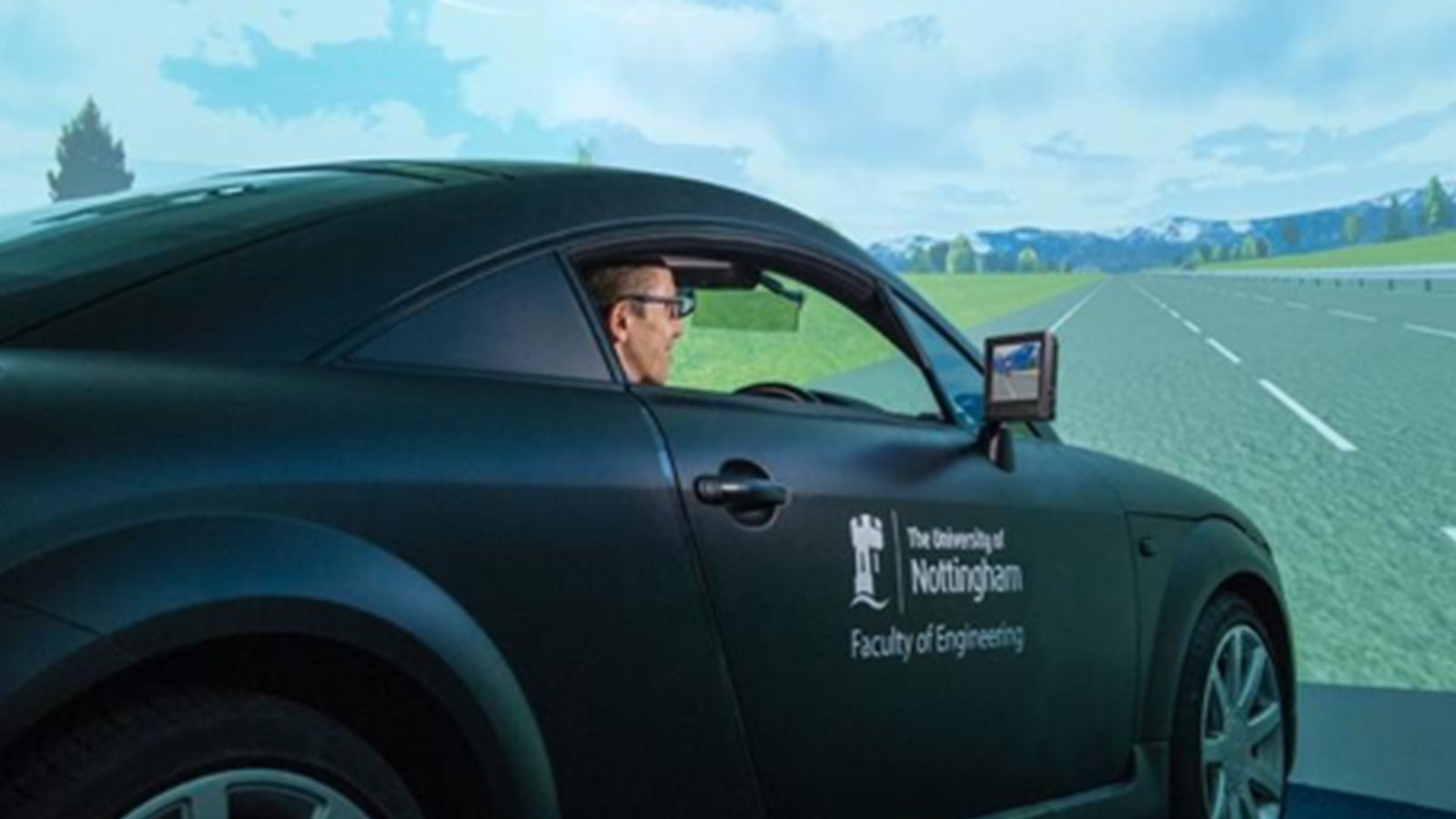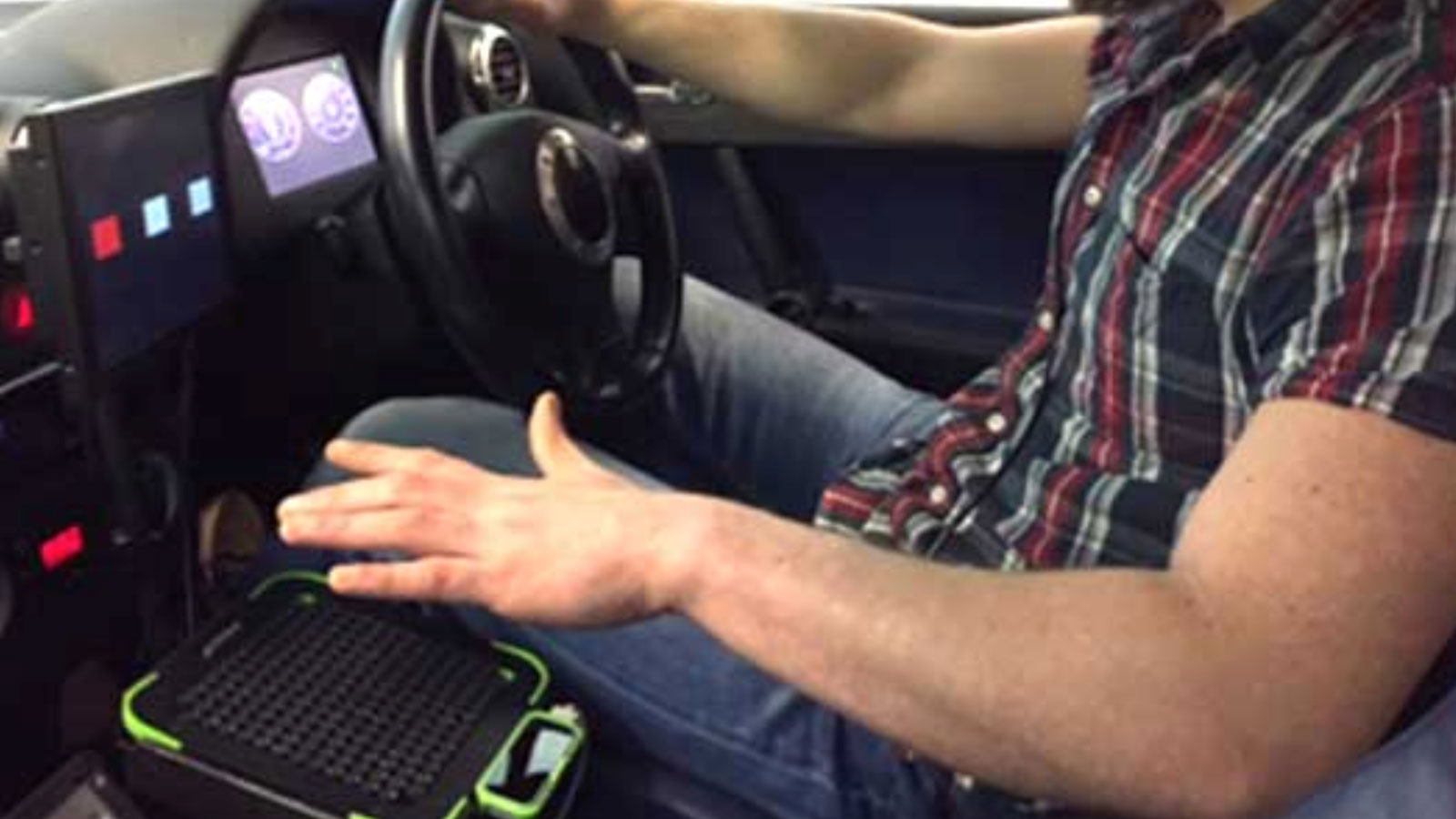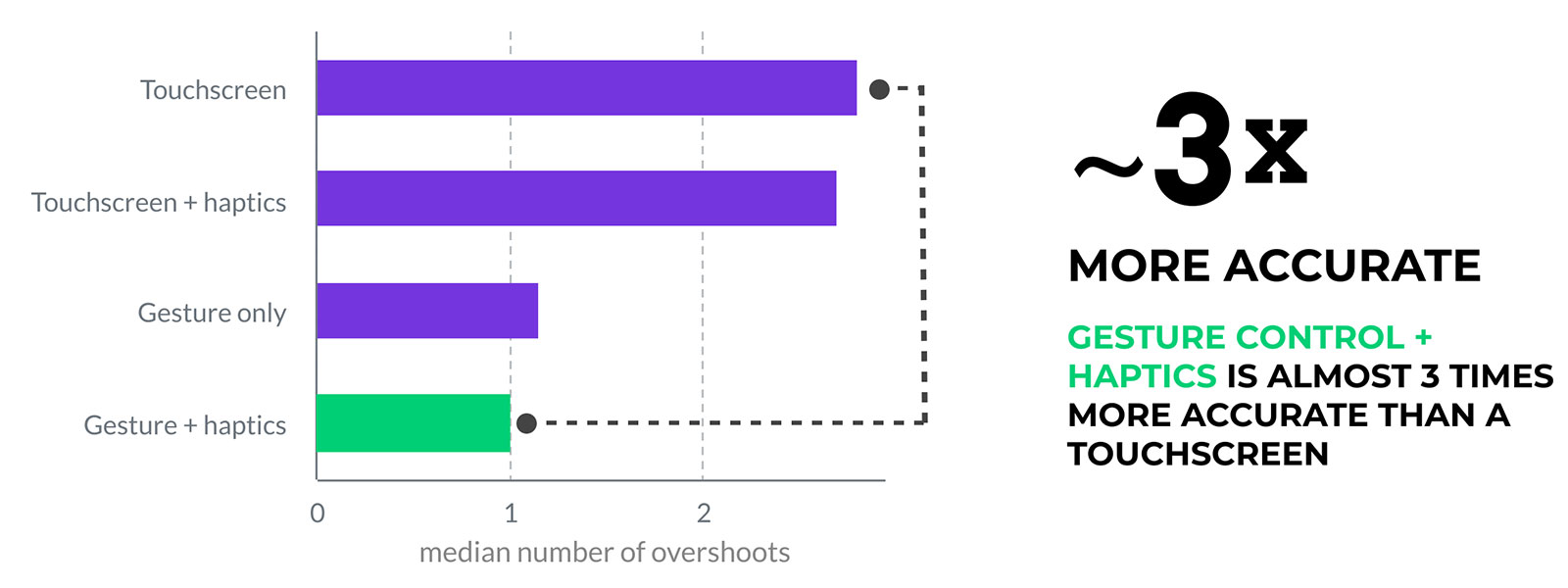Automotive UI Study Indicates Value of Haptic Feedback
Posted; May 16, 2018
Dr Orestis Georgiou, Director of Research at Ultraleap, gives an overview of the results of a recent academic study at the University of Nottingham, UK. It suggests that adding mid-air haptic feedback to gesture control in automotive UI reduces error rates, reduces “eyes off the road” time, and is preferred by users.
This was one of the things participants told an award-winning academic study exploring the use of mid-air haptics to enhance automotive user interfaces. The research was a collaboration between Ultraleap (previously Ultrahaptics) and Professor Gary Burnett, Dr David R Large, and Kyle Harrington of the Human Factors Research Group at the University of Nottingham, UK.

The full study was published in the Proceedings of the ACM Automotive User Interfaces 2018 conference in Toronto, where it won the award for best paper. The results suggest that participants’ positive reactions to mid-air haptics were supported by data across a range of metrics with significant safety implications.
Ultraleap's haptic technology uses patented algorithms to control ultrasound waves, enabling the creation of tactile sensations in mid-air. The 48 participants in the study did four simulated drives with four different types of in-car interfaces: a touchscreen without haptic feedback, a touchscreen with mid-air haptic feedback, gesture control without haptic feedback, and gesture control with mid-air haptic feedback.

Researchers tested two different types of interactions: a slider bar and button presses. User experience was measured across a whole spectrum, including eye-tracking (“eyes off the road” time), accuracy and efficiency, and participants’ subjective assessment.
HAPTIC FEEDBACK RESULTS IN REDUCED “EYES OFF THE ROAD” TIME
The results suggest that adding haptics to gesture control reduces both the total and the mean glance duration times (or “eyes off the road” time) for both buttons and sliders. The effect was very striking in the slider task, with gesture control plus haptics resulting in an average 25% decrease in total glance time compared to touchscreens. The mean glance duration was under two seconds for mid-air haptics for both button presses and slider bars.

Reducing glance time improves driving performance and vehicle control, thereby lowering the risk of accidents.
The researchers also noted that in the study, for control purposes the touchscreen was visible during gesture-controlled tasks (it showed an abstracted view of the button and slider selections). This could have attracted visual attention. The results therefore may actually understate the likely reduction in glance time.
Even more interestingly, 39% of participants (19 of 48) were able to perform tasks with no off-road glances at all. This highlights the potential for using mid-air haptics to create "zero-vision" automotive user interfaces.
HAPTIC FEEDBACK CAN REDUCE ERROR RATES
For the slider task, adding haptic feedback reduced the number of "overshoots" when using gesture control. In fact, gesture control with haptic feedback resulted in the greatest accuracy overall. Participants were, on average, three times more accurate compared to when they were using a touchscreen.

USERS PREFER GESTURE CONTROL WITH HAPTICS
Users prefer gesture control with haptics over both gesture control without haptics and touchscreens. For the slider task, the increase in preference was upwards of 80%.

CLEAR POTENTIAL FOR USING GESTURES WITH MID-AIR HAPTICS IN AUTOMOTIVE
This study demonstrated clear potential benefits for using gestures coupled with mid-air haptics in an automotive setting. It showed up to 25% reduced visual demand and a threefold improvement in accuracy. Users also expressed up to 85% improved preference for this mode of interaction.
Finally, it is important to note that further improvements are expected with regards to performance, accuracy, and glance times, as user familiarity with gesture interfaces and ultrasound haptics increases.
These numbers are not just an incremental improvement but potentially a massive shift in safety. This initial study is just the start of exploring how mid-air haptics can enhance automotive user experiences, and has unveiled some fascinating research questions.
In-car interfaces are an exciting but also uniquely challenging form of user experience to design. Explore how Ultraleap is powering the automotive interface of the future. Or find out more about our academic program and the pioneering community of researchers we collaborate with.
Dr Orestis Georgiou is a researcher and an author of over 60 publications. He leads and oversees Ultraleap’s scientific collaboration network with universities and research labs around the world.